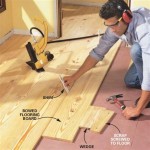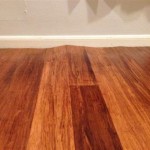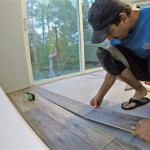Should Vinyl Plank Flooring Be Glued Down?
Vinyl plank flooring has emerged as a popular choice for both residential and commercial properties due to its durability, water resistance, and aesthetic versatility. One of the critical decisions when installing vinyl plank flooring is determining whether it should be glued down or installed as a floating floor. This decision significantly impacts the flooring’s performance, longevity, and ease of maintenance. Understanding the advantages and disadvantages of both methods is crucial for making an informed choice that aligns with specific project requirements and long-term expectations.
The term "glue-down" refers to the installation method where vinyl planks are adhered directly to the subfloor using a specialized adhesive. This creates a strong bond between the flooring and the subfloor, preventing movement and enhancing stability. In contrast, a “floating floor” installation involves interlocking the vinyl planks together without attaching them to the subfloor. The floating floor relies on the weight and friction of the planks to remain in place. Each method presents distinct advantages and disadvantages that must be carefully evaluated.
Factors Influencing the Glue-Down Decision
Several factors influence the decision of whether to glue down vinyl plank flooring. These factors include the type of subfloor, the intended use of the space, the expected traffic volume, and the desired level of sound reduction. A thorough assessment of these elements will help determine the optimal installation method for a particular project.
The type of subfloor is paramount. Glue-down installations generally require a smooth, level, and clean subfloor. Concrete, plywood, and existing tile are common subfloor materials, but each requires specific preparation. Concrete subfloors, for example, must be thoroughly cleaned and leveled to ensure proper adhesion. Unevenness can lead to telegraphing, where imperfections in the subfloor become visible on the surface of the vinyl plank. Plywood subfloors should be free of moisture and securely fastened to prevent movement that could compromise the adhesive bond.
The intended use of the space also plays a critical role. High-traffic areas, such as commercial spaces or entryways, often benefit from glue-down installations. The enhanced stability and durability provided by gluing down the planks can withstand the increased wear and tear associated with heavy foot traffic. Conversely, in less frequently used rooms, a floating floor might suffice, offering easier installation and potential for future removal or replacement.
Expected traffic volume is directly related to the preceding point. Areas subjected to heavy foot traffic, rolling loads (such as wheelchairs or carts), or frequent impact are better suited for glue-down installations. The secure bond prevents the planks from shifting or separating, ensuring long-term performance and minimizing the risk of damage. In residential settings with moderate traffic, a floating floor may be adequate, provided that the planks are of sufficient thickness and quality.
The desired level of sound reduction is another important consideration. Glue-down installations tend to offer better sound dampening compared to floating floors. The adhesive layer acts as a barrier, reducing the transmission of impact noise. Additionally, some adhesives are specifically formulated with sound-reduction properties. For spaces where noise control is a priority, such as apartments or home offices, gluing down the vinyl planks can provide a noticeable improvement in acoustics.
Advantages of Gluing Down Vinyl Plank Flooring
Gluing down vinyl plank flooring offers several distinct advantages over floating floor installations. The enhanced stability, durability, and water resistance provided by this method make it a preferred choice for many applications.
Enhanced stability is a key benefit. Gluing down the planks creates a strong bond between the flooring and the subfloor, preventing movement and minimizing the risk of shifting or separation. This is particularly important in high-traffic areas or spaces subject to significant temperature and humidity fluctuations. The stable surface also provides a more solid feel underfoot, enhancing comfort and reducing the likelihood of tripping hazards.
Improved durability is another significant advantage. The secure bond provided by the adhesive helps to protect the planks from damage caused by heavy loads, rolling equipment, or impacts. This is especially beneficial in commercial settings or areas where the flooring is likely to be subjected to heavy use. In residential settings, gluing down the planks can extend the lifespan of the flooring and reduce the need for repairs or replacements.
Increased water resistance is also a key consideration. While vinyl plank flooring is inherently water-resistant, gluing down the planks provides an additional layer of protection against moisture. The adhesive helps to seal the seams between the planks, preventing water from seeping beneath the flooring and damaging the subfloor. This makes glue-down installations particularly suitable for bathrooms, kitchens, and other areas prone to moisture exposure.
The adherence also allows for more intricate designs. Since the planks are secured, complex patterns and borders can be achieved without the risk of movement or shifting. This opens up a wider range of design possibilities and allows for greater customization of the flooring.
Disadvantages of Gluing Down Vinyl Plank Flooring
Despite the numerous benefits, gluing down vinyl plank flooring also presents certain disadvantages. These include the complexity of the installation process, the challenges associated with removal, and the potential for adhesive-related issues.
The complexity of the installation process is a significant drawback. Gluing down vinyl plank flooring requires meticulous subfloor preparation and precise application of the adhesive. The subfloor must be perfectly smooth, level, and clean to ensure proper adhesion. Any imperfections or contaminants can compromise the bond and lead to problems with the flooring. The adhesive must be applied evenly and in the correct amount to prevent voids or excessive squeeze-out. This process typically requires specialized tools and expertise, making it more challenging for DIYers.
The challenges associated with removal are another disadvantage. Once the vinyl planks are glued down, removing them can be a difficult and time-consuming process. The adhesive creates a strong bond that is resistant to tearing or peeling. Removing the planks often requires the use of specialized tools and techniques, such as heat guns or scrapers. The removal process can also damage the subfloor, requiring additional repairs or preparation before installing new flooring. This can significantly increase the overall cost and complexity of future flooring projects.
The potential for adhesive-related issues is also a concern. The choice of adhesive is critical to the success of a glue-down installation. Using the wrong type of adhesive or applying it improperly can lead to problems such as bubbling, peeling, or discoloration. Some adhesives may also emit volatile organic compounds (VOCs), which can negatively impact indoor air quality. Selecting a low-VOC adhesive and ensuring proper ventilation during installation can help to mitigate these risks.
Furthermore, the cost of a glue-down installation tends to be higher than that of a floating floor. This is due to the additional materials and labor involved in preparing the subfloor and applying the adhesive. While the long-term benefits of gluing down the planks may justify the higher initial cost in certain situations, it is important to consider the overall budget and weigh the advantages and disadvantages carefully.
Another potential issue is the permanence of the installation. Unlike a floating floor, which can be relatively easily disassembled and reinstalled, a glue-down installation is essentially permanent. If the flooring is damaged or needs to be replaced, the entire installation must be removed and replaced, which can be a costly and disruptive process.
Finally, the performance of a glue-down installation is highly dependent on the quality of the subfloor. If the subfloor is unstable or prone to movement, the adhesive bond can be compromised, leading to problems with the flooring. Thoroughly inspecting and preparing the subfloor is essential to ensure the long-term success of a glue-down installation.

Floating Vinyl Plank Flooring Vs Glue Down 99cent Floor

Does Vinyl Flooring Need To Be Glued Down Thediyplan

Glue Down Vs Floating Lvp Which Is Better Whole Cabinet Supply

Do I Need To Glue Vinyl Flooring

How To Repair Luxury Vinyl Plank Flooring The Palette Muse

Lean About Everlife Glue Down And Plank Flooring

Deal Floors Step By Glue Down Vinyl Plank Installation Guide Flooring Blog Ideal In Dallas Fort Worth

Lean About Everlife Glue Down And Plank Flooring

How To Install Glue Down Vinyl Plank

How To Install Glue Down Vinyl Plank
Related Posts








